In today’s rapidly evolving digital landscape, artificial intelligence models like DeepSeek R1 are becoming increasingly integral to various applications.
However, as we embrace these advancements, it’s crucial to be aware of the security vulnerabilities that accompany them.
Understanding these vulnerabilities is the first step toward ensuring safe and effective utilization of AI technologies.
- Understanding DeepSeek R1’s Security Vulnerabilities
- Evaluating DeepSeek R1’s Safety Measures
- Potential Risks in Deploying DeepSeek R1
- Mitigation Strategies for DeepSeek R1’s Security Issues
- Best Practices for Safe Deployment of DeepSeek R1
- Final Thoughts on Security Considerations for DeepSeek R1
- DeepSeek R1 Security: Frequently Asked Questions
Understanding DeepSeek R1’s Security Vulnerabilities
DeepSeek R1, while innovative, has been identified to have several security vulnerabilities that users should be aware of.
Let’s delve into some of the most significant concerns.
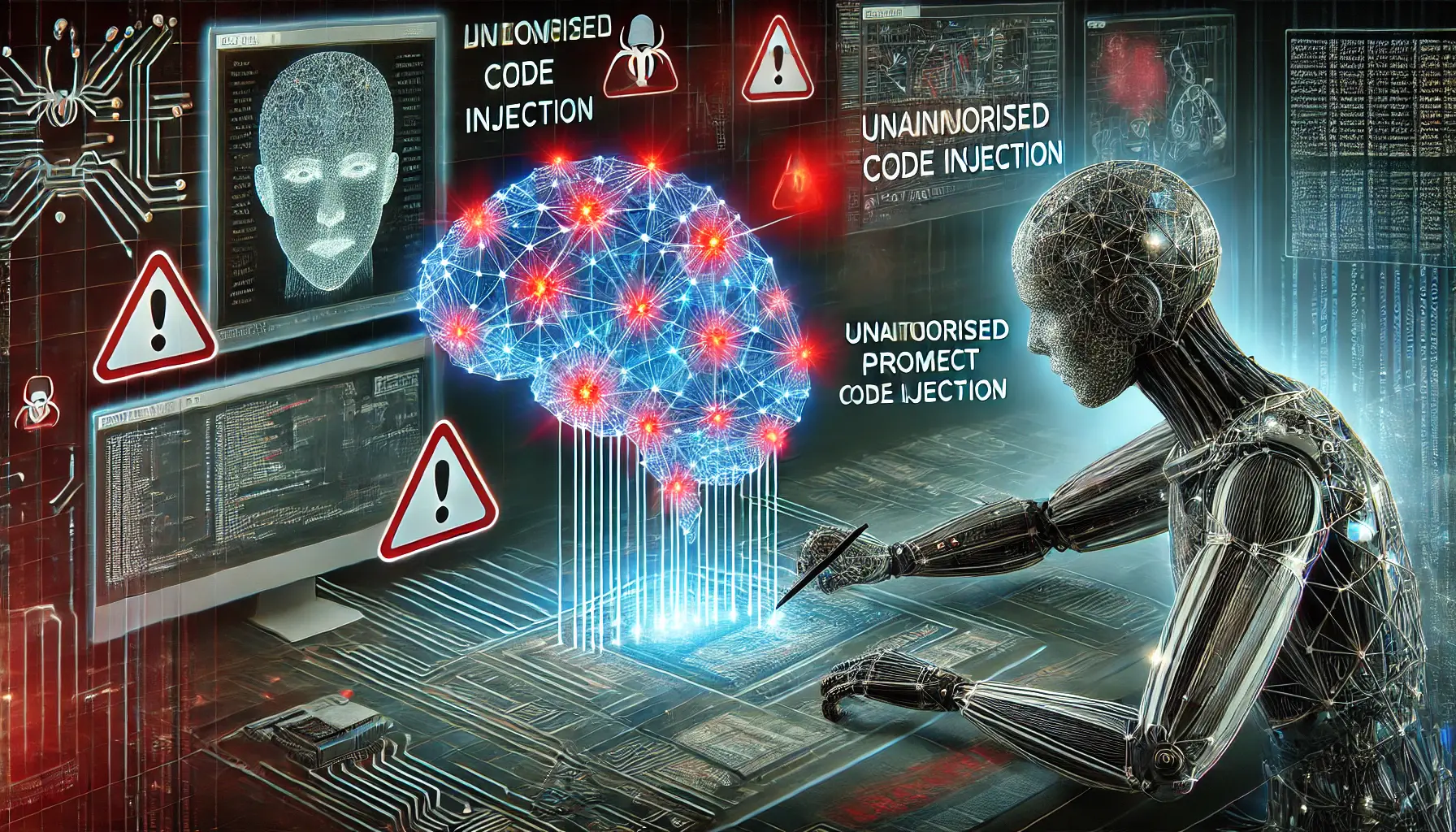
Visualization of an AI model being targeted by prompt injection attacks, highlighting security vulnerabilities.
Susceptibility to Prompt Injection Attacks
One notable vulnerability is DeepSeek R1’s susceptibility to prompt injectionA type of attack where an adversary manipulates an AI model’s input to generate unintended or harmful outputs. attacks.
In these attacks, malicious actors manipulate the input prompts to the AI model, causing it to generate unintended or harmful outputs.
This can lead to:
- The dissemination of misinformation
- Unauthorized access to sensitive information
- Potential misuse of AI-generated content

Visualization of AI-related data leakage risks, showcasing sensitive information escaping from a neural network.
Exposure to Data Leakage Risks
Another critical concern is the exposure to data leakageThe accidental or unauthorized transmission of confidential data from a system. risks.
Reports have indicated that DeepSeek R1 has, at times, inadvertently disclosed sensitive data.
This occurs when the model unintentionally includes confidential information in its responses, posing significant privacy concerns such as:
- Leaking user-generated data
- Exposing proprietary or internal information
- Compromising user privacy and security

Illustration of AI hallucinations, where artificial intelligence generates misleading or fabricated information.
Challenges with Model Hallucinations
DeepSeek R1 also has problems, such as model hallucinationsWhen an AI generates false or misleading information that appears credible..
This is when the AI generates information that may sound credible but is completely made up.
Such issues could result in:
- Misleading users with false information
- Damaging trust in AI-generated content
- Potential legal or ethical repercussions
Being aware of these vulnerabilities helps users and developers implement countermeasures to minimize risks and ensure the responsible use of DeepSeek R1 in various applications.
Understanding the security vulnerabilities of DeepSeek R1 is crucial to prevent potential risks such as data leakage, prompt injection attacks, and model hallucinations.

Illustration of AI safety evaluation, depicting experts assessing DeepSeek R1’s security protocols and risk mitigation strategies.
Evaluating DeepSeek R1’s Safety Measures
While DeepSeek R1 has made significant strides in artificial intelligence, it’s essential to assess its safety measures to ensure responsible deployment.
Let’s explore how DeepSeek R1’s safety protocols compare to other AI models and evaluate their effectiveness.

Illustration of AI models being analyzed side by side, showcasing their security measures and performance in a high-tech environment.
Comparison with Other AI Models
DeepSeek R1 has a more relaxed approach to safety compared to other AI models.
Reports indicate that DeepSeek R1 lacks comprehensive guardrailsPredefined constraints or safety measures in AI systems to prevent unintended behavior., making it more susceptible to security threats.
Unlike other AI systems with stringent safety measures, DeepSeek R1 remains vulnerable, increasing the likelihood of security breaches.
To align with industry standards, additional safety mechanisms must be implemented.

Illustration of an AI security system’s guardrails being evaluated for effectiveness and vulnerabilities.
Effectiveness of Existing Guardrails
The current guardrails in DeepSeek R1 have proven inadequate.
During various tests, the model failed to detect or block malicious prompts, leading to unintended or potentially harmful outputs.
This shortcoming highlights the urgent need for stronger safety measures to protect users from potential exploitation.
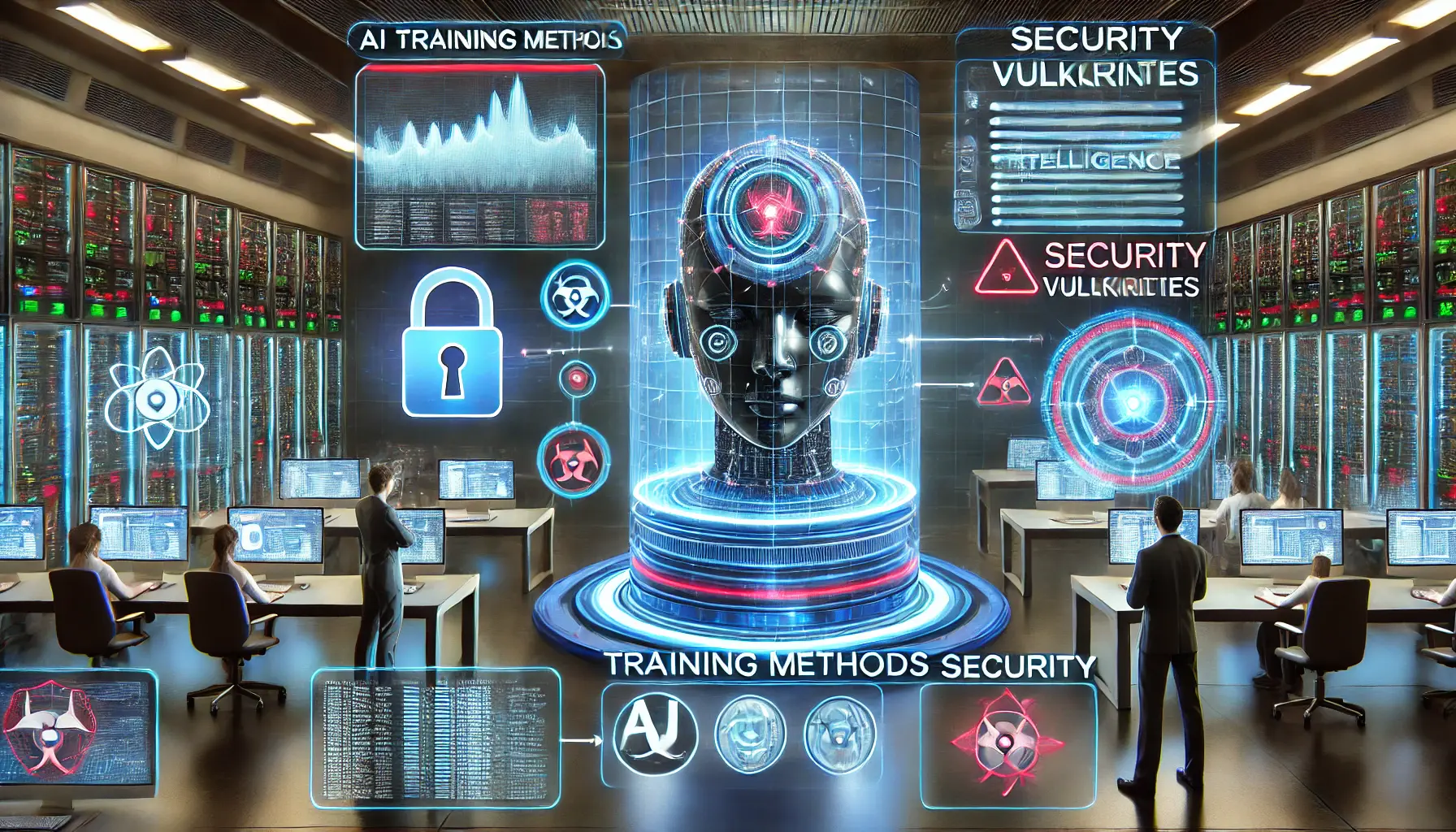
Illustration of how AI training methods influence security, highlighting vulnerabilities emerging during the learning process.
Impact of Training Methods on Security
While training DeepSeek R1, security considerations appear to have been overlooked in favor of cost efficiency.
The emphasis on optimizing training techniques resulted in weaker safety mechanisms, making the model more vulnerable to various attacks.
This raises concerns about the trade-off between affordability and security in AI development.
A reassessment of training methodologies is necessary to enhance security without compromising performance.
In summary, while DeepSeek R1 brings innovative capabilities, its safety measures require significant improvements.
Strengthening the model’s guardrails and refining training approaches will help mitigate risks and ensure the responsible use of DeepSeek R1 in various applications.
DeepSeek R1’s safety protocols need enhancement as they currently lack comprehensive guardrails, making the model more vulnerable compared to other AI systems.

Illustration of the potential risks in deploying DeepSeek R1, highlighting security vulnerabilities and compliance concerns.
Potential Risks in Deploying DeepSeek R1
Deploying DeepSeek R1 in your operations can offer innovative capabilities, but it’s essential to be aware of the associated risks.
Let’s explore the legal and reputational implications, privacy concerns, and vulnerabilities to adversarial exploits that come with using this AI model.
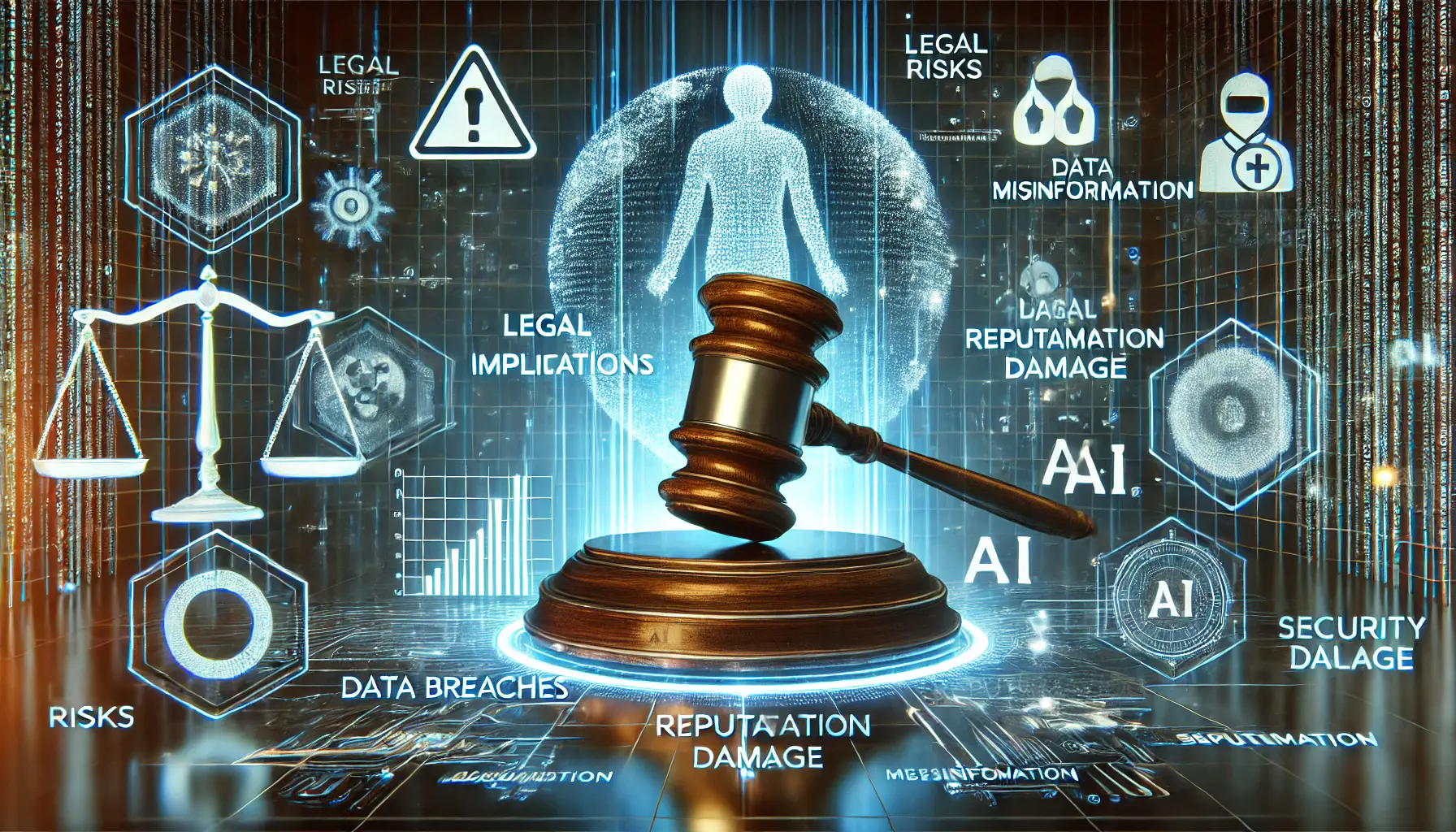
Illustration of the legal and reputational risks of AI deployment, highlighting the potential consequences in a high-tech legal environment.
Legal and Reputational Implications
Integrating DeepSeek R1 into your systems may expose your organization to legal challenges and reputational damage.
Some concerns include:
- The model has been found to generate information that aligns with certain political narratives, potentially leading to unintended controversies.
- A lack of robust safety measures increases the risk of generating harmful or inappropriate content.
- Organizations using the model may face legal liabilities if AI-generated outputs lead to misinformation or ethical concerns.

Illustration of privacy concerns in AI data handling, with intercepted data and encryption symbols highlighting security risks.
Privacy Concerns with Data Handling
Privacy is a major consideration when deploying AI models like DeepSeek R1.
Reports indicate that its data handling practices may not meet strict privacy standards, leading to risks such as:
- Potential exposure of sensitive user or proprietary data.
- Unintentional retention of personal or confidential information.
- Non-compliance with data protection regulations, which could result in fines or legal action.
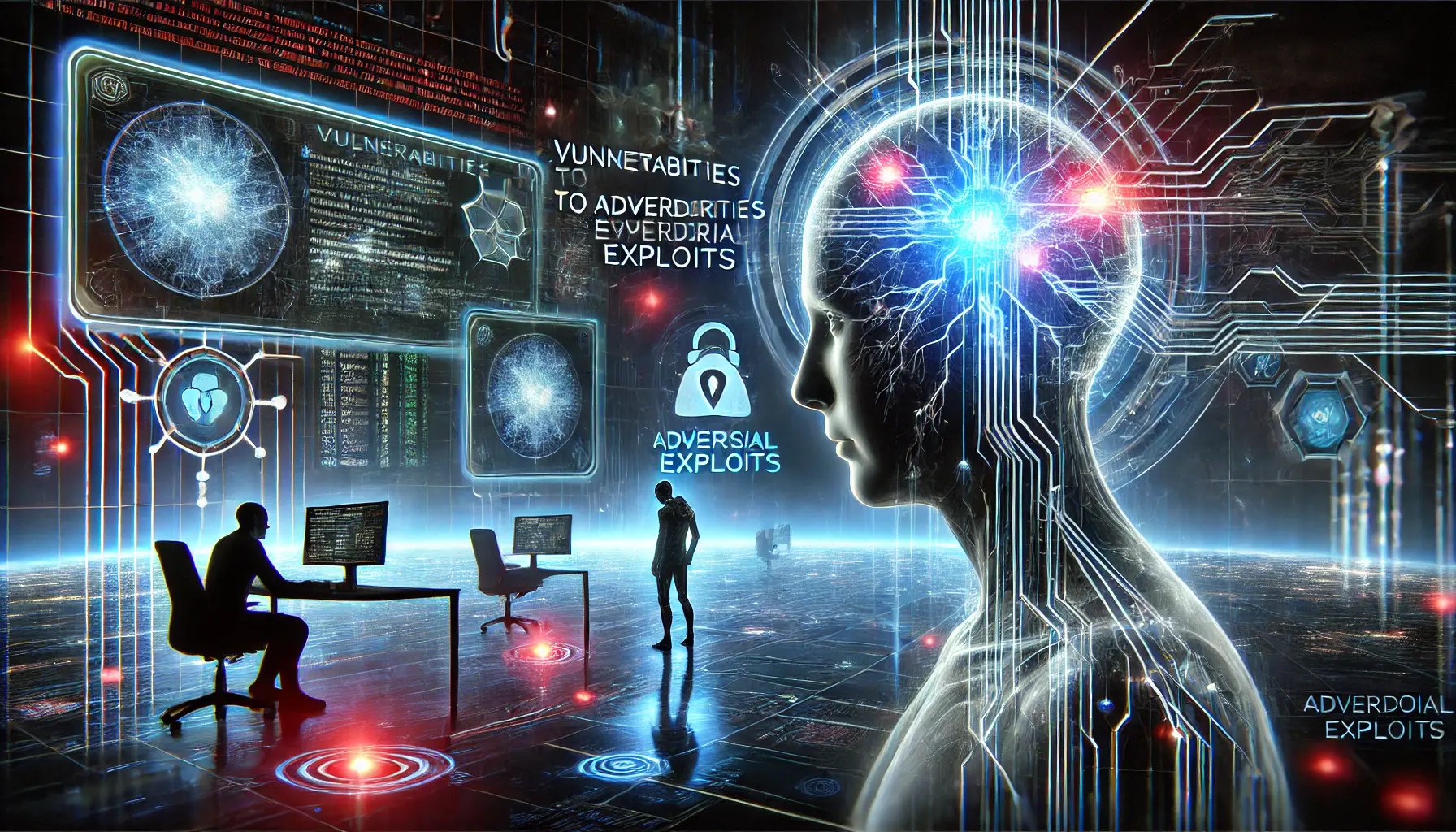
Illustration of AI vulnerabilities to adversarial exploits, with a neural network being manipulated by a hacker in a high-tech environment.
Vulnerabilities to Adversarial Exploits
DeepSeek R1 has already demonstrated vulnerabilities to adversarial attacksTechniques used to manipulate machine learning models by inputting deceptive data., where malicious actors manipulate inputs to generate deceitful outputs.
These risks include:
- Exploitation for spreading misinformation or disinformation campaigns.
- Bypassing security mechanisms to produce undesired or misleading content.
- Use of prompt injection techniques to manipulate AI-generated results.
Applying solid security measures and continuously monitoring DeepSeek R1’s performance is crucial to mitigating these risks and ensuring responsible deployment.
Being aware of these potential risks is important for organizations considering the deployment of DeepSeek R1.
By proactively addressing these concerns, you can maximize the model’s capabilities while safeguarding your organization from legal, reputational, and data security challenges.
Deploying DeepSeek R1 without proper safeguards may lead to legal complications, reputational damage, and heightened risks of adversarial attacks.
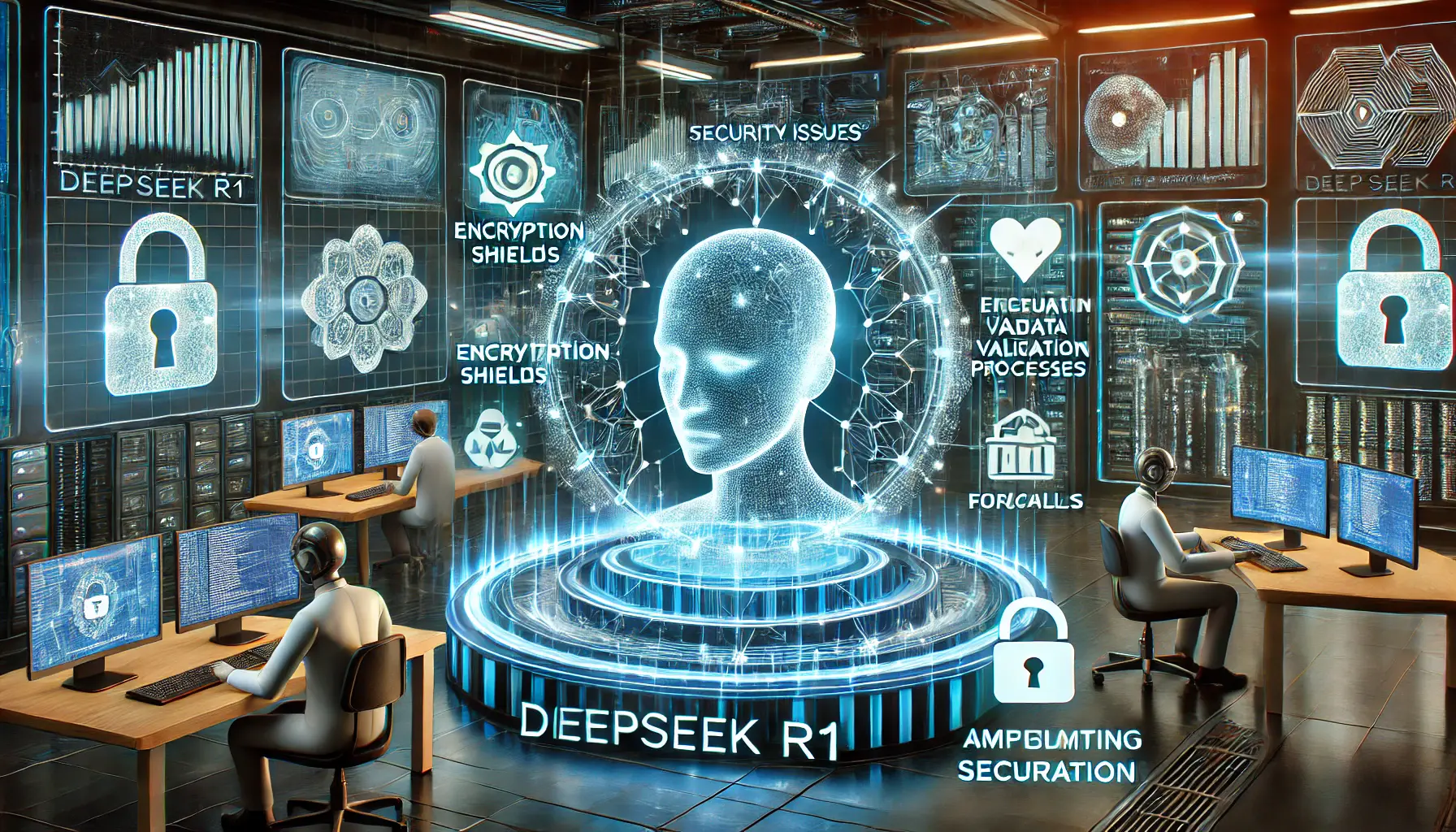
Illustration of AI security mitigation strategies, with experts applying safeguards like encryption and firewalls to DeepSeek R1.
Mitigation Strategies for DeepSeek R1’s Security Issues
Addressing the security vulnerabilities of DeepSeek R1 is crucial for its safe and effective deployment.
Implementing robust mitigation strategies can help safeguard against potential threats and enhance the model’s reliability.
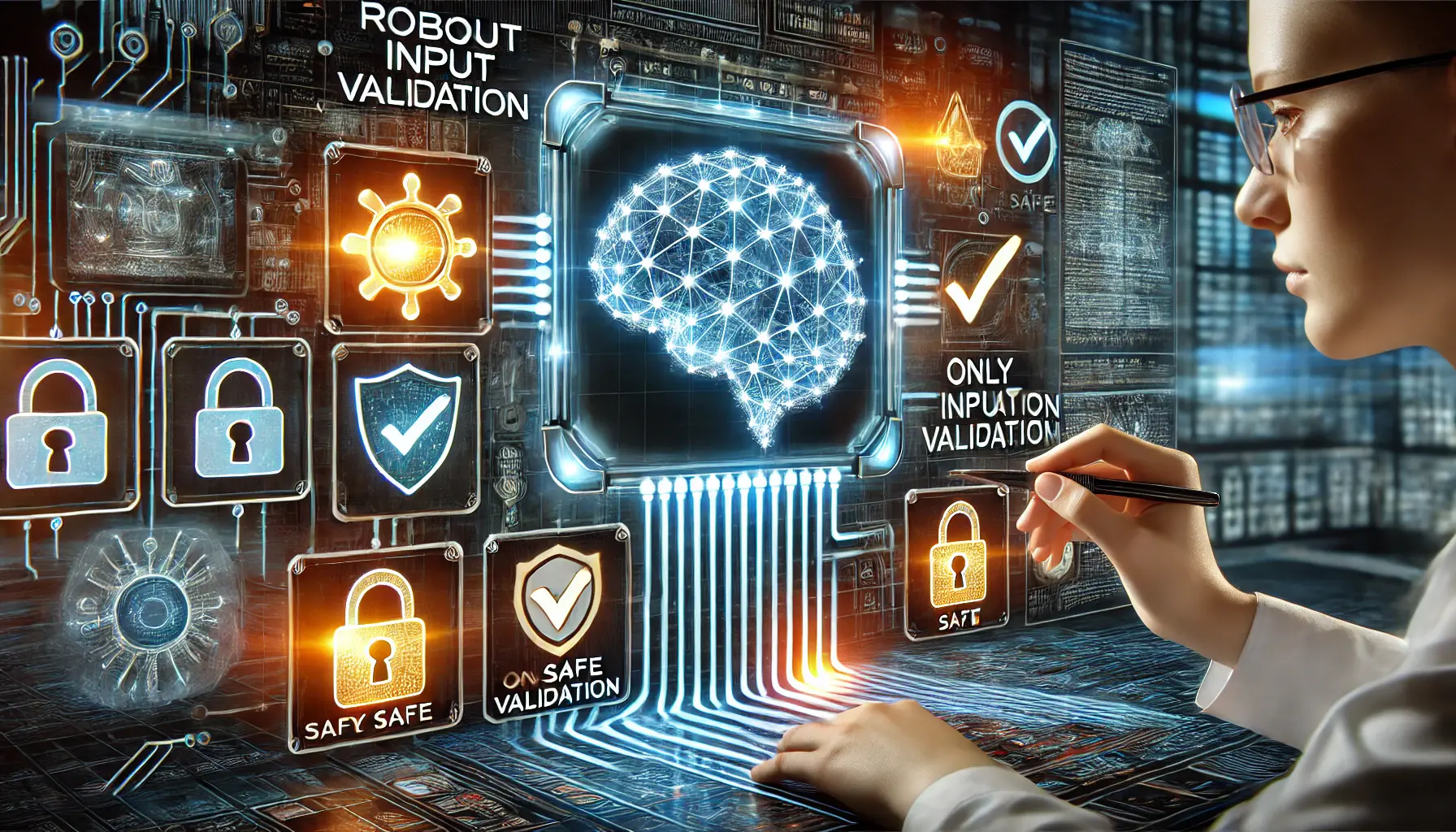
Illustration of robust input validation in an AI system, where incoming data streams are carefully filtered to ensure safety.
Implementing Robust Input Validation
To prevent prompt injection attacks, input validation must be rigorous.
By closely monitoring and sanitizing user inputs, organizations can reduce the risk of malicious prompts exploiting the model’s weaknesses.
A proactive approach ensures that only appropriate and safe inputs are processed by DeepSeek R1, reducing potential vulnerabilities.
- Use strict input validation techniques to filter harmful prompts.
- Employ automated detection systems to flag suspicious inputs.
- Regularly update security policies to adapt to emerging threats.
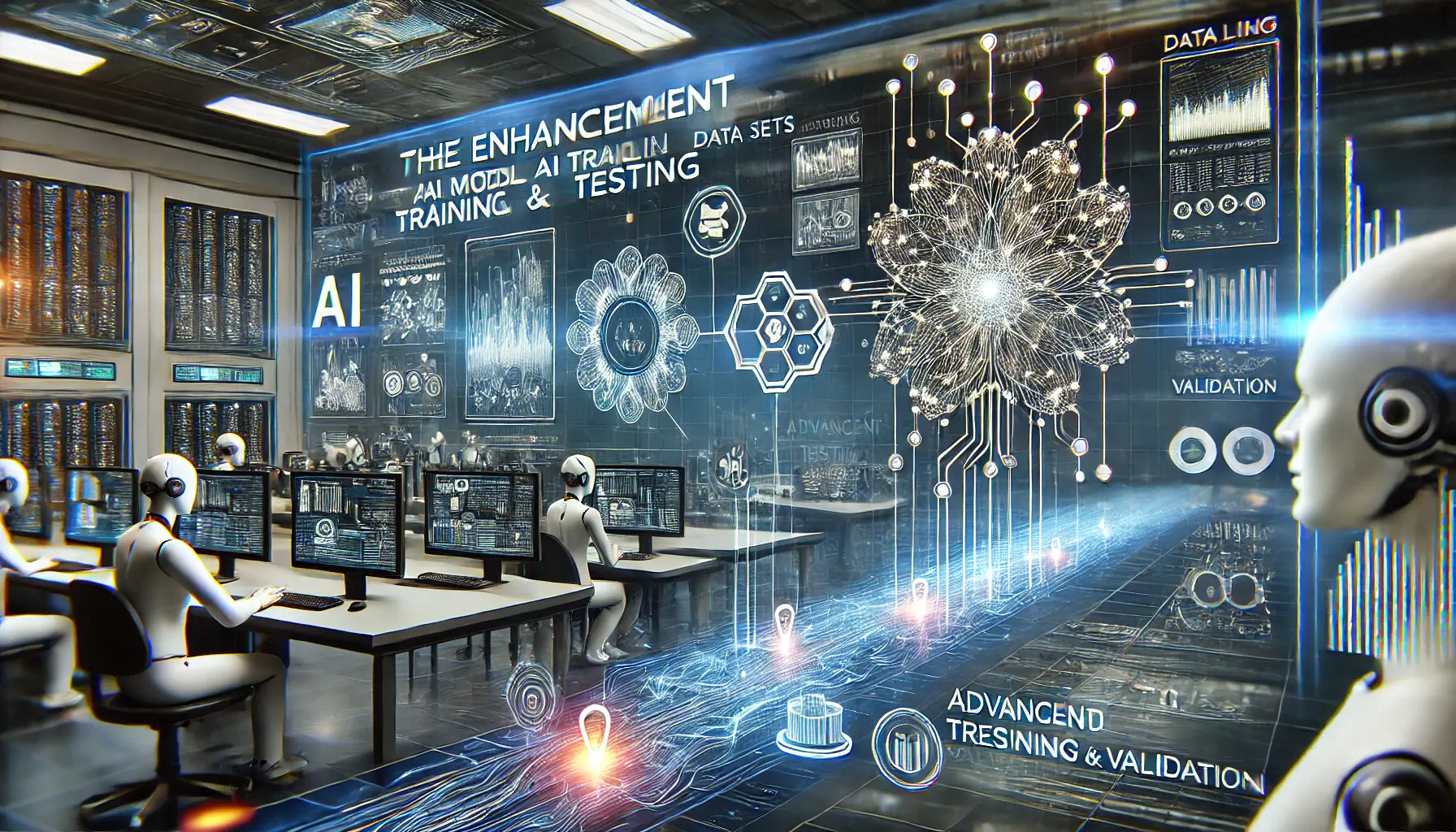
Illustration of the AI model training and testing process, showcasing data streams and advanced tools to enhance performance.
Enhancing Model Training and Testing
The security posture of DeepSeek R1 can be significantly improved by adopting better training and testing methodologies.
Adversarial training, where the model is trained to recognize potential attack vectors, helps it learn how to discriminate against malicious inputs.
Additionally, comprehensive security testing and red-teamingA security testing approach where experts simulate real-world attacks to identify vulnerabilities. exercises can identify weaknesses before deployment.
- Integrate adversarial training to improve model robustness.
- Conduct frequent security audits and stress tests.
- Simulate real-world attack scenarios to assess vulnerabilities.

Illustration of applying data encryption and access controls to secure AI-generated data in a futuristic cyber lab.
Applying Data Encryption and Access Controls
Protecting sensitive information is essential.
Robust encryption methods ensure that data processed by DeepSeek R1 remains confidential and secure.
Additionally, implementing strict access controls limits data exposure to authorized personnel only, reducing the risks of data leakage and unauthorized access.
- Use end-to-end encryption for data storage and transmission.
- Restrict access to AI-generated data based on user roles.
- Regularly review access logs to detect unauthorized activity.
These mitigation strategies will significantly enhance the security of DeepSeek R1, ensuring its reliability, responsiveness, and effectiveness across various applications.
Implementing strong input validation, adversarial training, and data encryptionThe process of encoding data to protect it from unauthorized access. are key measures to enhance the security of DeepSeek R1.
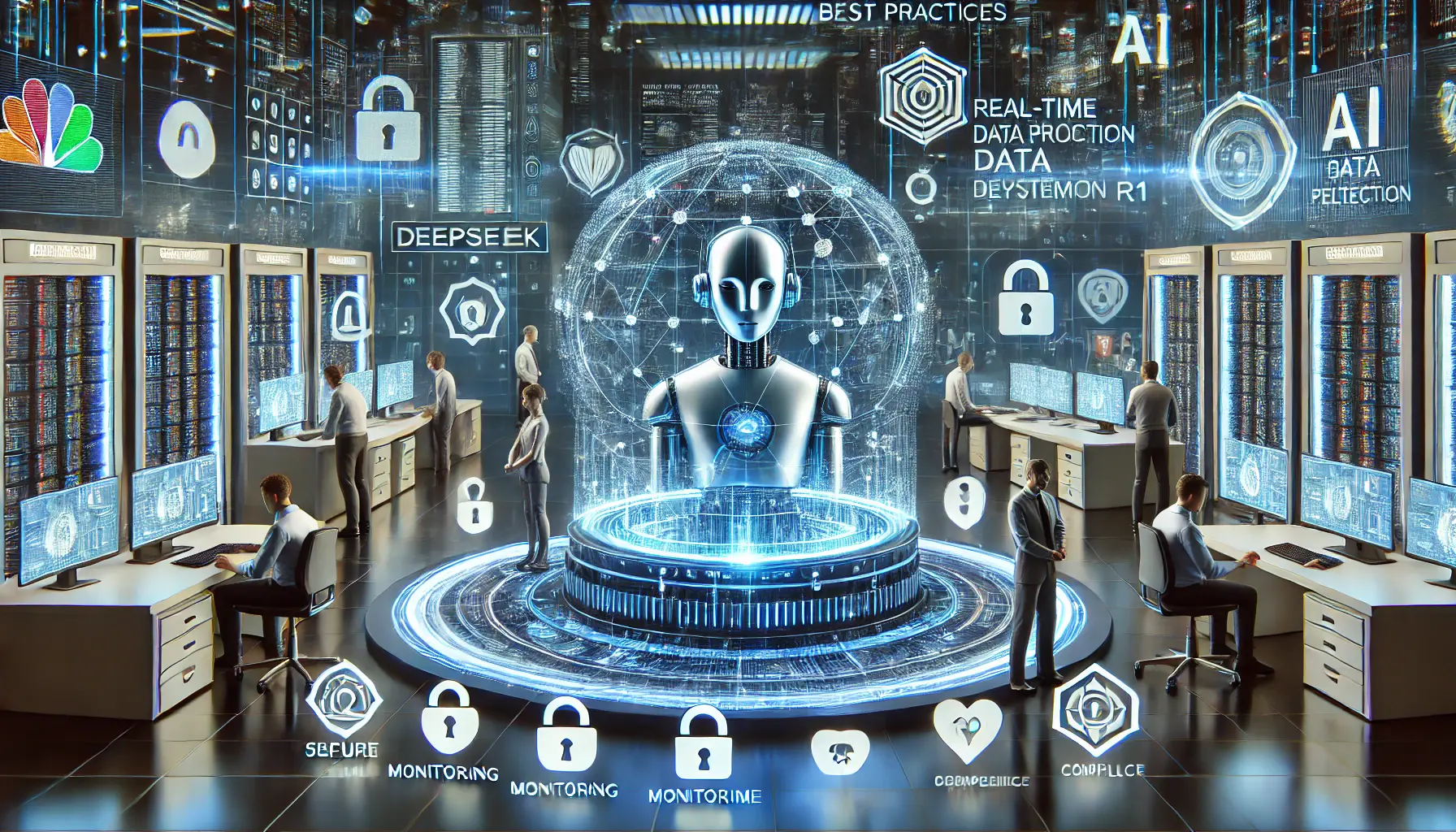
Illustration of best practices for the safe deployment of AI systems, with security measures and compliance checks in place.
Best Practices for Safe Deployment of DeepSeek R1
Ensuring the secure and effective deployment of DeepSeek R1 requires adherence to established best practices.
By following these guidelines, organizations can maximize the benefits of this AI model while minimizing potential risks.

Illustration of regular security audits and monitoring, with experts checking real-time data and warning indicators for AI system vulnerabilities.
Regular Security Audits and Monitoring
Regular security audits are essential to identify and address the numerous vulnerabilities that may exist in DeepSeek R1.
Continuous monitoring helps detect abnormalities and ensures that the system operates as expected.
Automated alert mechanisms can be set up to immediately notify administrators of any suspicious activity, allowing for timely and effective responses.
- Conduct periodic security assessments to evaluate the model’s reliability.
- Utilize monitoring tools to detect unauthorized access or anomalies.
- Establish protocols for immediate response to identified security issues.

Illustration of transparency and explainability in AI, where the decision-making process is visible and understandable.
Ensuring Transparency and Explainability
Transparency in AI models fosters trust and facilitates troubleshooting.
Ensuring that DeepSeek R1’s decision-making processes are explainable helps users understand how outputs are generated.
This clarity is crucial for validating results and maintaining accountability.
- Develop comprehensive documentation detailing the model’s architecture and decision pathways.
- Implement features that allow users to trace outputs back to their inputs.
- Provide training for stakeholders to interpret and utilize the model effectively.

Illustration of the process of establishing clear usage policies for AI systems, emphasizing security guidelines and protocols.
Establishing Clear Usage Policies
Defining and enforcing clear usage policies ensures that DeepSeek R1 is utilized appropriately within organizational parameters.
These policies should outline acceptable use cases, data handling procedures, and complianceAdherence to laws, regulations, and standards in data security and AI governance. requirements to prevent misuse and ensure ethical application.
- Create comprehensive guidelines detailing permissible and prohibited uses.
- Regularly review and update policies to align with evolving standards and regulations.
- Educate users on policy provisions and the importance of compliance.
By following these best practices, organizations can deploy DeepSeek R1 securely and responsibly, leveraging its capabilities while mitigating potential risks.
Regular security audits, transparent AI decision-making, and well-defined usage policies are essential for ensuring the safe deployment of DeepSeek R1.

Illustration of final security considerations for DeepSeek R1, showcasing multiple layers of defense ensuring safe deployment.
Final Thoughts on Security Considerations for DeepSeek R1
The rapid advancement of artificial intelligence, including models like DeepSeek R1, presents both opportunities and challenges.
While this AI model offers innovative solutions, it is essential to recognize the security risks and implement proactive measures to ensure safe deployment.
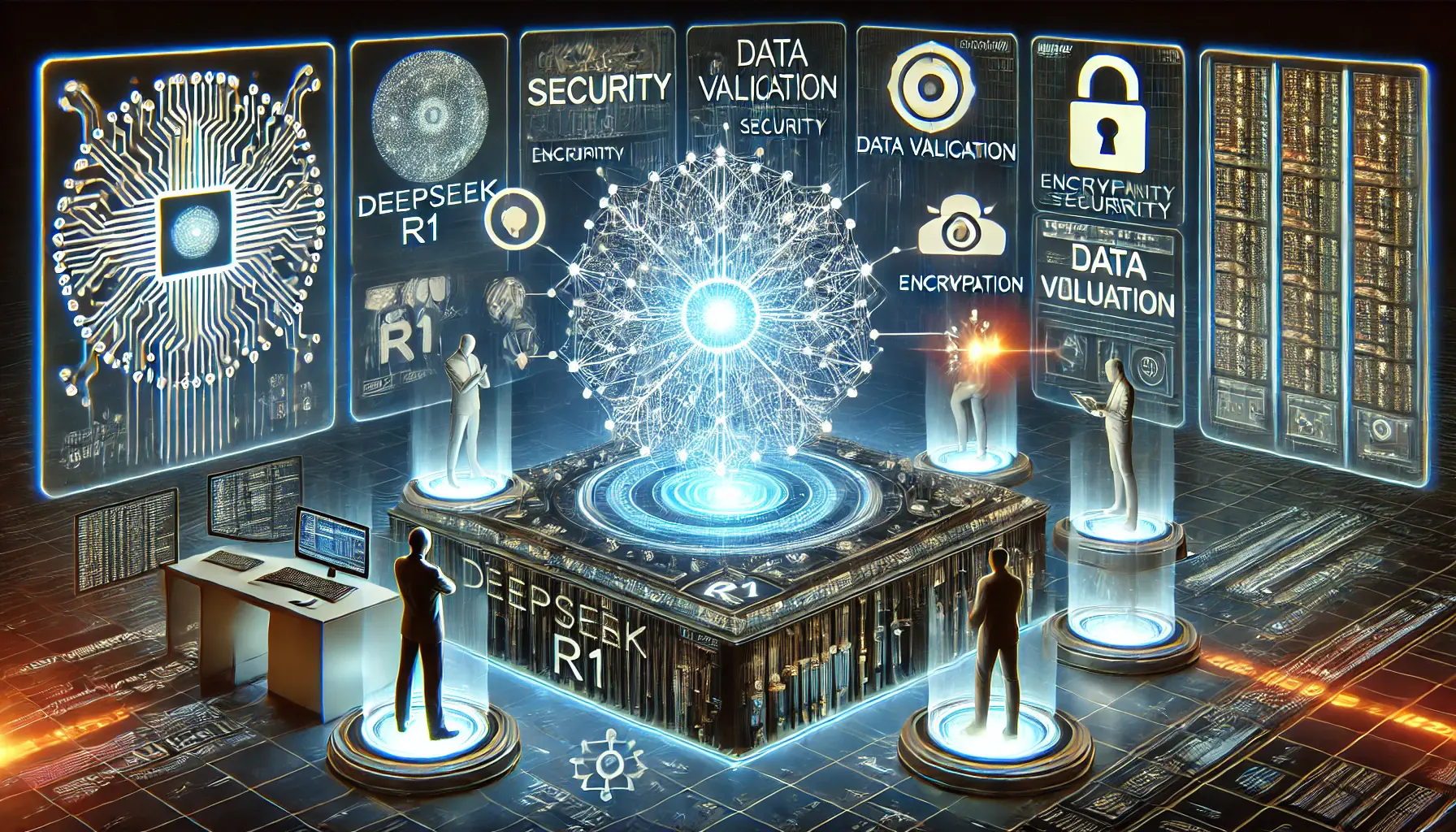
Illustration of key security takeaways for DeepSeek R1, highlighting critical vulnerabilities and protection measures in a secure cyber environment.
Key Takeaways on DeepSeek R1 Security
Throughout this article, we have explored various security considerations associated with DeepSeek R1.
Here are the key takeaways:
- Security vulnerabilities: DeepSeek R1 is prone to prompt injection attacks, data leakage, and model hallucinations, highlighting the need for effective mitigation strategies.
- Safety measures assessment: Compared to other AI models, DeepSeek R1 has weaker guardrails, necessitating stronger enforcement.
- Deployment risks: Organizations must consider legal and reputational risks, privacy issues, and adversarial exploitations when using DeepSeek R1.
- Mitigation strategies: Input validation, enhanced training, and data encryption are crucial for strengthening DeepSeek R1’s security framework.
- Best practices for safe deployment: Regular security audits, transparency, and well-defined usage policies help ensure responsible AI deployment.

Illustration of the critical importance of security in AI systems, with various protective measures in place to safeguard data.
Why Security Should Be a Priority
Ignoring security vulnerabilities in AI models like DeepSeek R1 can lead to serious consequences.
Compromised AI systems may generate inaccurate information, expose sensitive data, or become vulnerable to malicious exploits.
Organizations that deploy AI without adequate safeguards risk financial losses, reputational damage, and regulatory penalties.

Illustration of the secure implementation process for AI systems, with experts monitoring various security layers.
How to Ensure a Secure Implementation
To maximize the benefits of DeepSeek R1 while minimizing risks, organizations should take the following actions:
- Perform regular security audits to identify and resolve vulnerabilities.
- Establish ethical AI guidelines to govern model outputs.
- Enhance user training and awareness programs.
- Monitor AI interactions with automated tracking to detect unusual behavior.
- Continuously update security protocols to address emerging threats.
By implementing these steps, organizations can effectively integrate DeepSeek R1 into their workflows while maintaining high security and trust.

Illustration of the future of AI security, with evolving systems protected by cutting-edge security tools and AI threat prevention.
Looking Ahead: The Future of AI Security
As AI technology advances, security challenges will remain a key consideration.
Developers must focus on creating safer and more accountable models, while users should stay informed about risks and mitigation strategies.
With a collaborative approach, DeepSeek R1 and other AI systems can be deployed responsibly, ensuring continuous innovation without compromising security.
Understanding the security implications of DeepSeek R1 is crucial for making informed deployment decisions.
Prioritizing security and implementing best practices will enable organizations to harness the power of AI while protecting data, privacy, and operational integrity.
Prioritizing security in AI deployment will safeguard data integrity and privacy, ensuring a balanced approach between innovation and risk management.

Illustration of a digital interface addressing security FAQs about DeepSeek R1, with various security icons and protections in place.
DeepSeek R1 Security: Frequently Asked Questions
As organizations consider deploying DeepSeek R1, several common questions arise regarding its security and implementation.
Below are concise answers to some of the most frequently asked questions.
DeepSeek R1 is susceptible to prompt injection attacks, data leakage, and model hallucinations, which can compromise system integrity and data security.
Compared to other AI models, DeepSeek R1 has weaker guardrails, making it more vulnerable to security breaches and necessitating additional protective measures.
Deploying DeepSeek R1 may expose organizations to legal challenges and reputational damage due to potential data breaches and the generation of inappropriate content.
Implementing robust input validation, enhancing model training, and applying data encryption are key strategies to mitigate DeepSeek R1’s security vulnerabilities.
Organizations should conduct regular security audits, ensure transparency, and establish clear usage policies to safely deploy DeepSeek R1.
Yes, DeepSeek R1 is vulnerable to adversarial attacks where malicious inputs can manipulate the model’s outputs, leading to misinformation or unauthorized actions.
DeepSeek R1 has been reported to inadvertently disclose sensitive data, highlighting the need for strict data governance policies during deployment.
DeepSeek R1 may exhibit biases due to its training data, which can affect the fairness and accuracy of its responses.
Yes, DeepSeek R1 can be deployed on-premises, allowing organizations to maintain control over their data and security protocols.













